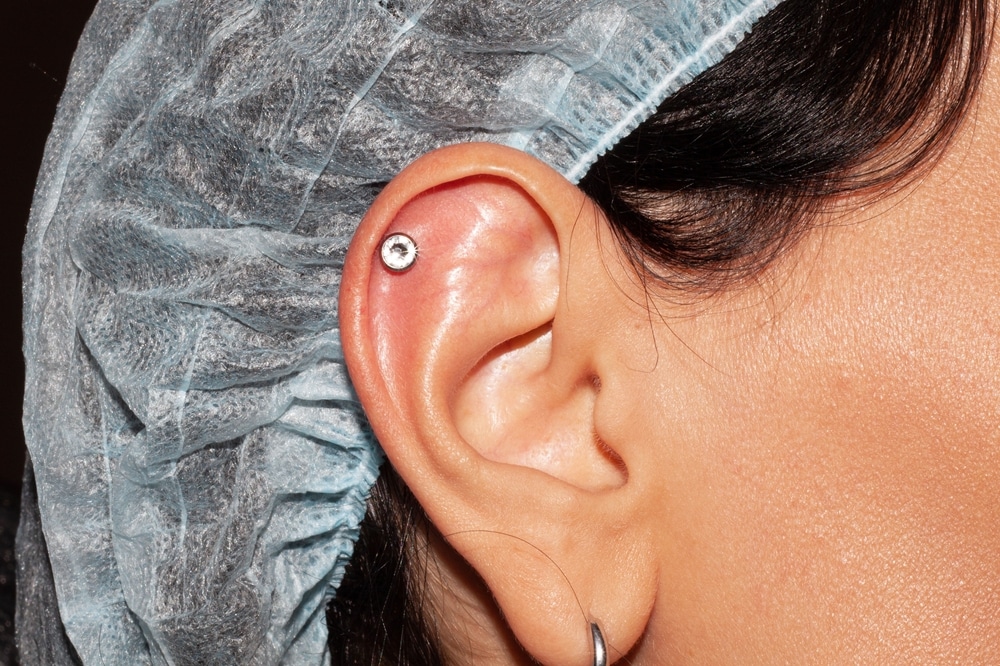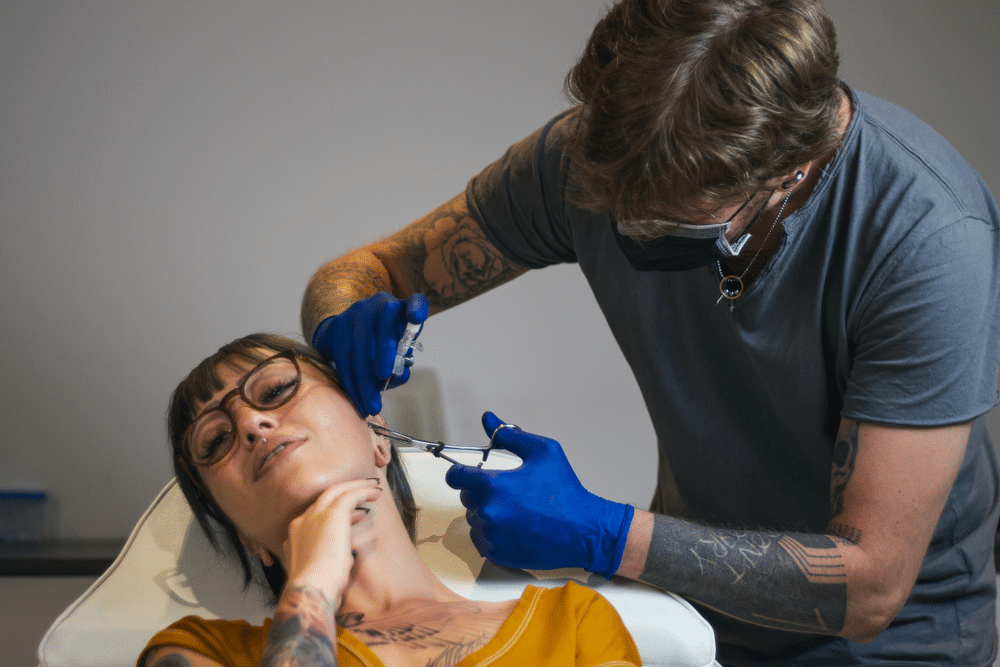Are you bored of your traditional earlobe piercings? Now it’s time for a change to add a touch of edge and elegance to your look with versatile forms of cartilage piercings. Helix piercings are one of the favorites among cartilage piercings, becoming popular among fashion enthusiasts and offering endless possibilities for jewelry styles and personal expression. However, successful helix piercings demand a proper understanding of the process, pain level, and healing time, and helix piercing aftercare is crucial. This article will delve into these aspects, answering questions like “What is a helix piercing,” “What gauge is a helix piercing,” and more.
What is a Helix Piercing?
A helix piercing is a form of cartilage piercing that is positioned on the helix, or outer rim, of the upper ear. Due to the tough cartilage tissue in the piercing location, the healing process could vary slightly from that of softer tissues, such as the earlobes. Helix piercings offer a versatile canvas for various jewelry styles, including hoop earrings and captive bead rings.
Types of Helix Piercings
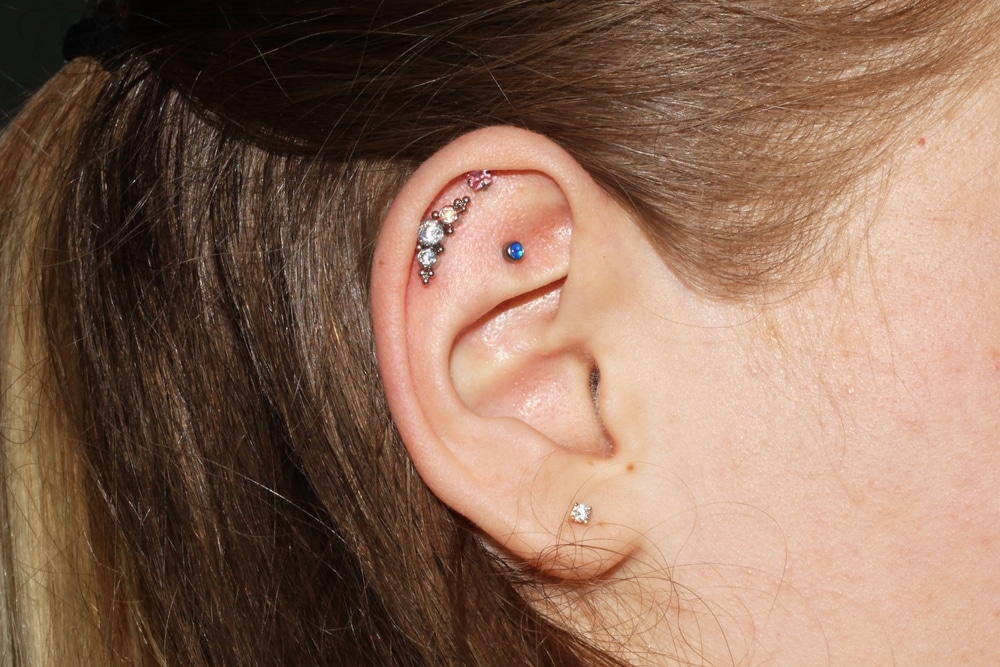
Helix piercings are versatile and come in various forms in terms of placement and number of piercings. Here’s a breakdown of the different types of helix piercings:
Standard Helix Piercing
The standard helix piercing is located on the top outer cartilage of the ear. It’s the most common type of helix piercing and can be adorned with a variety of helix jewelry, such as studs, hoop earrings, and captive bead rings.
Lcolyoli Medusa Piercing Jewelry Stainless Steel
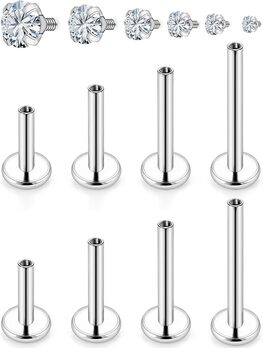
Product Details
- Metal, Crystal Material
- Stainless Steel Metal
- Cubic zirconia Gem
Double Helix Piercing
A double helix piercing consists of two vertically positioned piercings, one above the other, along the helix. It typically has the same gauge and hoop sizes as a single helix, but the positioning of the two piercings permits imaginative pairings of jewelry designs.
Triple Helix Piercing
As the name suggests, a triple helix piercing involves three piercings along the helix, usually spaced evenly apart. The healing process may take longer and more careful piercing aftercare because of multiple piercings.
Forward helix piercing
The forward helix piercing is situated on the bottom portion of the helix, close to the area where the head and ear meet the face. This placement allows for the achievement of a single, double, or triple helix piercing, giving it a distinctive appearance.
Anti-helix Piercing
The anti-helix piercing, often called a snug piercing, is situated on the cartilage’s inner ridge opposite the helix.
Jewelry Style: What are the Best Earrings for Helix Piercing?
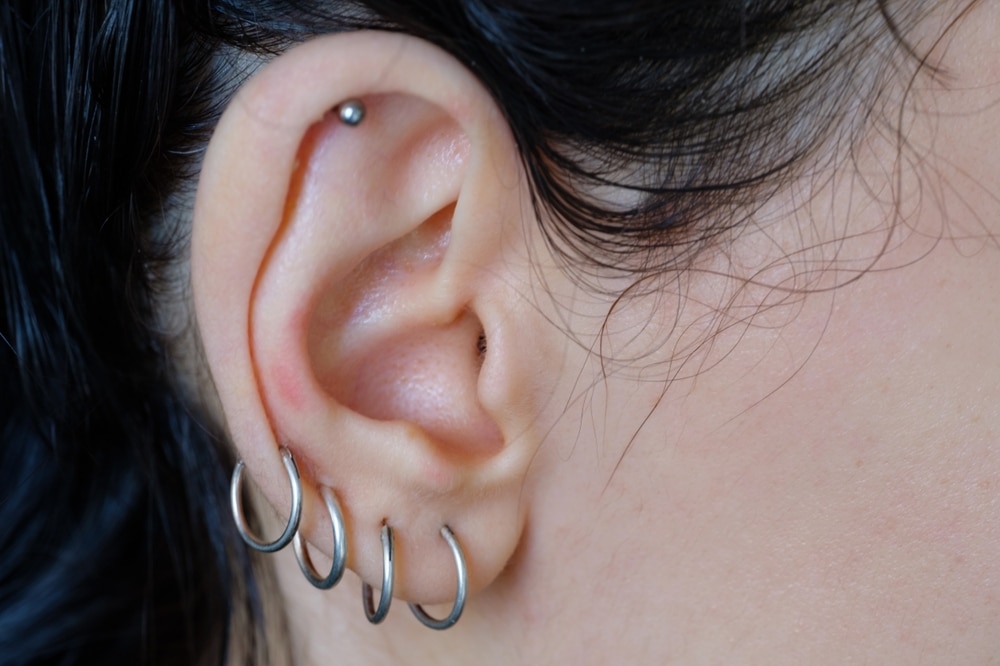
There is no strict rule for wearing specific earrings in helix piercings; however, the selection of the best earrings for helix piercing is often a matter of personal preference. However, there are a few factors to consider when selecting your helix jewelry:
Captive Bead Rings
These are popular for helix piercings because they are secure and offer a sleek look. The tiny ball inside the captive bead ring is kept in place by tension created between the ring’s ends.
Hoeudjo Large Septum Rings
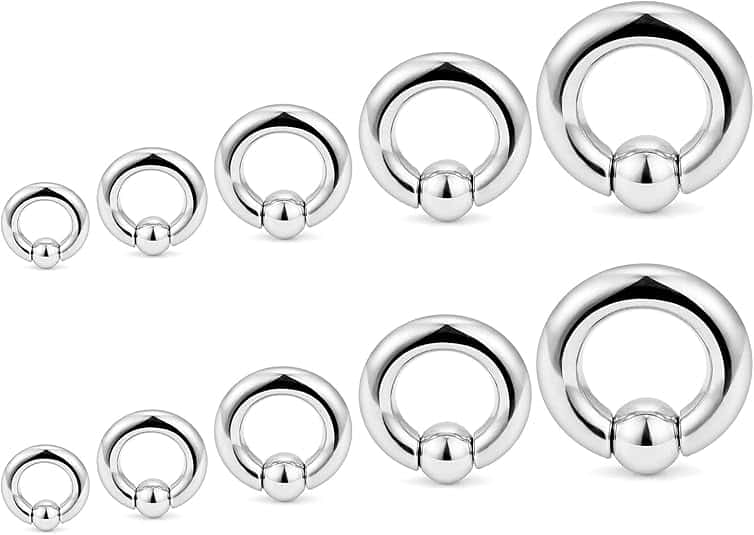
Product Details
- Metal Material
- Stainless Steel Metal
- Stainless Steel Gem
Hoop Earrings
Small hoop earrings are another stylish option. They can give your ear a delicate, minimalist touch, particularly if you’re layering multiple cartilage piercings.
Silver Plated Hoop Earrings for Women
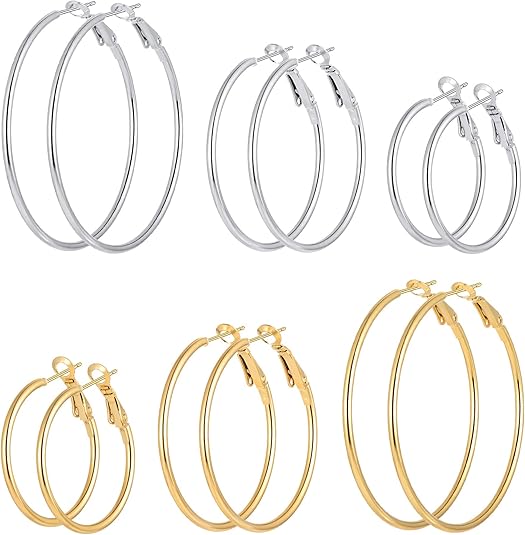
Product Details
- Stainless Steel Material
- Stainless Steel Metal
- French Clip Back
- No Gemstone
Studs
If you prefer something subtle, a simple stud can be an excellent choice. Stud earrings are less likely to move and irritate the skin, making them also excellent choices for the initial healing phase.
Gold Stud Earrings Set for Women
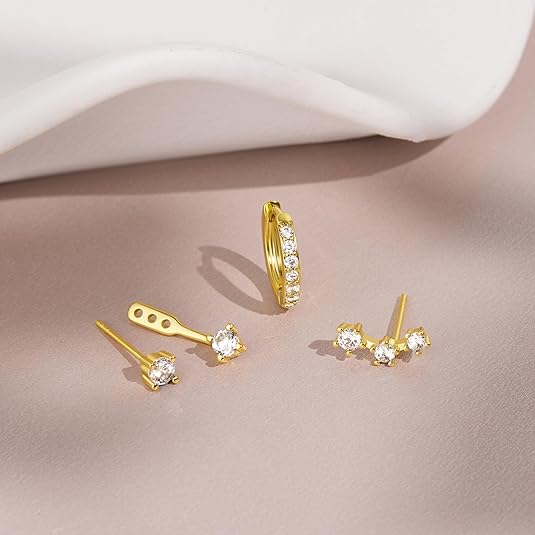
Product Details
- 0.2 inches Width
- Yellow Gold Material
- Brass Metal
- Push Back
- Cubic Zirconia Gem
Piercing Aftercare Tips
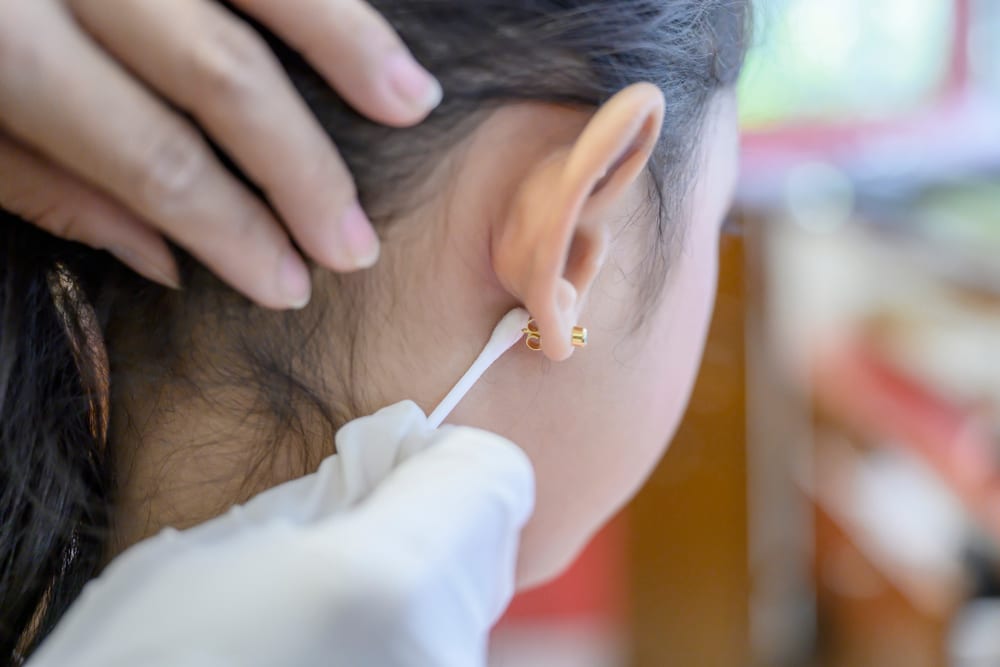
Pain is a significant consideration for anyone getting a new piercing. For helix piercings, the pain level is generally considered to be moderate. The use of a piercing gun is strongly discouraged for cartilage piercings like the helix, as it can cause more trauma to the area and complicate the healing process. Instead, a professional piercer will use a hollow needle to create the piercing, which is safer and more controlled.
For your helix piercing to heal properly, proper aftercare is essential. The following advice will assist you in your healing process.
Clean the Piercing Area Regularly
Use a saline solution to clean the piercing area twice a day. This reduces the chance of infection and keeps the area clean of bacteria. Avoid using alcohol or hydrogen peroxide, as these can be too harsh and may irritate the piercing.
Refrain from Touching the Piercing
Try to keep your piercing free of contact unless you are cleaning it. Bacteria from unclean hands can enter the piercing site and cause infections.
Choose the Right Jewelry
Since surgical steel or titanium are less likely to result in allergic responses, choose high-quality helix jewelry during the early healing phase. After your wounds have healed, you can wear other jewelry designs, like rings with captive beads or hoop earrings.
Be Careful with Hair and Clothing
Hair and clothing can easily get caught on your new piercing, which can be painful and cause complications. Practice mindfulness when styling and brushing your hair.
Use a Paper Towel to Dry
Gently pat the area around your piercing dry with a clean paper towel after cleaning it with a saline solution. Fabric towels are not recommended since they might harbor bacteria and snags on jewelry.
Healing Times: How Long Does It Take?
Healing durations for helix piercings can vary from person to person, but typically, it takes six to twelve months for the piercing to heal completely. Due to the tissue’s density, cartilage piercings require a more prolonged healing period. It’s important to stick to the recommended piercing aftercare during this time to avoid infections and encourage quick recovery.
Average Healing Time
Helix piercings typically heal completely in three to six months. However, it’s not uncommon for some piercings to take up to 12 months.
Phases of recovery
First Healing (Up to One or Two Weeks)
At this point, the piercing site may be uncomfortable, swollen, and red. Your body is aggressively attempting to mend the tissue.
Mid-Healing (1-3 Months)
The piercing should feel more stable, and the swelling should decrease. But while the cartilage is still healing, keeping that area free from damage is very important.
Final Healing (3-6 Months)
The piercing should have mostly healed by now. However, maintaining aftercare procedures is still crucial to preventing problems.
Gauge Size in Helix Piercings?
The gauge size of a helix piercing usually indicates the thickness of the jewelry that will be placed into the piercing. The common gauge for helix piercings is 16 gauge, though this can vary from person to person based on personal anatomy and personal preference. The 16 gauge size is popular because it balances durability and comfort, allowing for a wide range of helix jewelry options.
Helix Piercings vs. Other Cartilage Piercings
Helix piercings are a common form of cartilage piercing, although they are not the only kind. Here’s how they compare to other types
Conch Piercings
Conch piercings are situated in the inner cartilage of the middle section of the ear. Depending on their placement, they can be either inner or outer conch piercings. Conch piercings are performed using a 16-gauge needle and require recovery periods and aftercare similar to helix piercings.
Tragus Piercings
The tragus piercing is located on the small, thick piece of cartilage that partially covers the ear canal. The thickness of the cartilage in this piercing can make it more painful, but the recovery times are similar to those of helix piercings.
Rook Piercings
The rook piercing is placed in the cartilage fold above the ear canal. It’s a more unusual and intricate piercing, often done with a curved barbell.
Conclusion
The versatility of helix piercings offers endless opportunities for style to enhance their ear jewelry style. However, it is essential to understand the pain level, healing times, and piercing aftercare, which are crucial for a successful outcome. The healing times of helix piercings can vary from person to person, and proper care with a saline solution and the right helix jewelry can make all the difference in achieving a beautiful, well-healed piercing. Every piercing is unique, and your experience can vary, so take care of your piercings and enjoy your new helix piercings by adorning various kinds of earrings.
